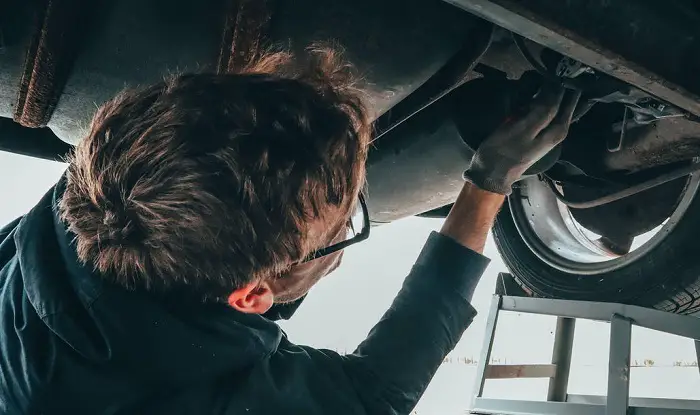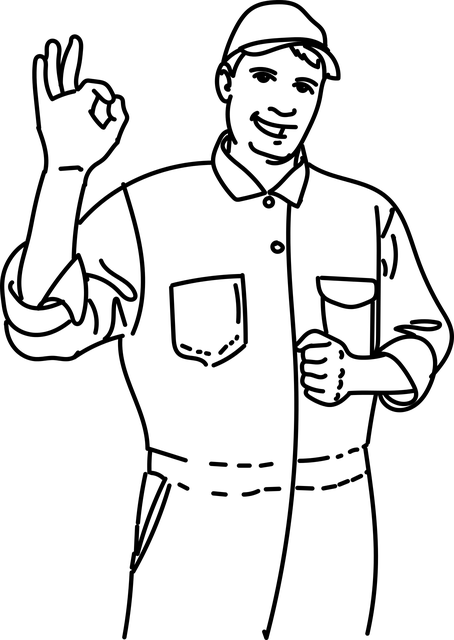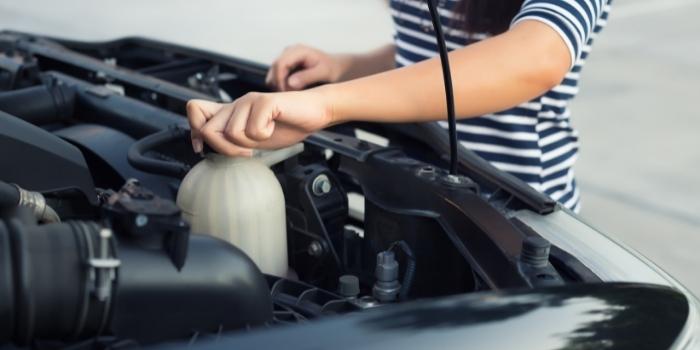Are you driving a rusted and corroded vehicle?
Have your vehicle’s protective undercoatings failed, leaving your vehicle’s vulnerable underbelly exposed to the elements?
It appears that undercoating is required.
On the plus side, if you possess a newer vehicle, you won’t have to undercoat it very often.

Most modern automobiles are made of rust-resistant and lightweight materials such as polycarbonate, aluminum, carbon fiber, magnesium, and polycarbonate.
It not only makes them significantly more fuel-efficient and lightweight, but it also makes them less sensitive to corrosive pollutants.
But it doesn’t imply the contemporary automobile is immune, which is why, in colder locations, all automobiles receive an undercoating at the manufacture, which requires periodic cleaning and reinstallation.
However, many automobile owners still don’t know what the undercoatings are? What materials are they made of? How do they function? Is it possible to have more than one type of undercoating?
Just keep reading this article and all your queries will be solved.
Table of Contents
What is Car Undercoating?
Vehicle undercoating is a technique that protects a vehicle against corrosion and damage caused by gravel, road salts, sand, and other filth while also reducing road noise.
One advantage of undercoating is that it can help to extend the life of your truck by protecting the metal from rust and corrosion.
It can also provide some insulation against noise and vibration, and it can make it easier to clean the underside of your vehicle.
However, there are also some drawbacks to undercoating. The material can trap moisture, which can lead to rusting from the inside out.
It can also make it difficult to inspect the underside of your vehicle for problems, and it can make repairs more difficult.
Especially, vehicles’ lifespan can be prolonged in places of intense climate change by applying adequate undercoating.
However, regardless of where you reside, it is suggested that all cars be undercoated.
Different Types of Undercoating
Undercoating comes in a variety of forms, ranging from do-it-yourself sprays to expert coatings.
Some of them are as follows:
1- Water-Based
These undercoatings are common among DIYers. These undercoatings are available in the aerosol form at car parts retailers.
Water-based undercoatings are thin and dry quickly.
This sort of coating can be applied by automobile businesses that provide low-cost undercoating services.
The disadvantage of water-based undercoatings is that they need to be redone very frequently.
The tiniest abrasion that breaks through the undercoating can sometimes necessitate the application of a fresh coat.
Even if the product is inexpensive, repetitive undercoating might add up.
2- Paraffin Based
These undercoatings are slightly stronger than the preceding undercoating which is water-based undercoating.
Undercoatings based on paraffin can be acquired in spray and paint-on forms from an automobile retailer.
This sort of coating is likewise thin-set and dries quickly.
This is available as an option when purchasing a new car, or it may be professionally done by an automobile service.
Undercoating made of paraffin must be redonned at least once a year at the expense of the vehicle owner.
3- Petroleum-Based
These undercoatings are manufactured from oil and have better deflective properties against road salts and dirt.
The petroleum foundation repels water and ice more effectively than paraffin or water-based undercoatings.
These undercoatings can be done at the time of purchasing the vehicle which you can get done by professionals.
This sort of undercoating must also be updated at the owner’s expense once a year.
4- Rubber Based
The is by far the second strongest undercoating for cars.
This form of undercoating provides more flexibility in the undercarriage and is more resistant to harsh terrain.
Undercoatings based on the rubber are available in spray and paint-on forms.
Because of the thickness of the application, it is best advised to have pros do it for you to guarantee optimal coverage.
This rubber-based undercoating can also be done while buying the car.
5- Asphalt Based
The strongest undercoating of them all. It is seen on all-terrain vehicles and military vehicles.
Asphalt-based undercoating will last the longest and is the ideal choice for cars that get a lot of road use.
The thickest layer with the greatest damage-resistant qualities is asphalt-based undercoating.
It is only available through professional services and is the only form of undercoating that comes with a limited guarantee.
You can also get this strongest coating while buying a new car.

How to Undercoat Your Car Safely?
It is important to get your car undercoating if you want to extend its life and make it quieter to drive.
Properly undercoating the vehicle will keep the rust at bay and will protect the undercarriage of your car from lots of other gunk and debris materials.
Here are a few items you’ll need to safely undercoat your automobile.
- Hydraulic jack & car blocks
- Grinder
- Degreaser
- Towel
- Sandpaper
- Paintbrush
- Primer & paint
- Undercoating
Once you have these in place, you may start undercoating your car by following the steps given below.
Step #1 – Lift the Car
Lift the automobile using the hydraulic car jack and place it on the blocks.
Make certain that they are securely fastened beneath the chassis frame.
Also, remember to work in a well-ventilated area.
Because you will be working with paint, you must ensure that you can breathe properly within the space.
Step #2 – Clean the Undercarriage
Clean the whole underbelly of your car using the degreaser.
After that remove all of the rust areas using the grinder.
Wipe away any dust, and if there are any minor rusted spots, use metal sandpaper to remove them.
Step #3 – Apply the primer and paint
When the rust is removed and carefully cleaned, you can then apply the primer.
Allow it to dry before applying a coat of black automotive paint to the affected area.
Allow the paint to dry before proceeding to the next step.
Step #4 – Apply the undercoating
Apply the automobile undercoating using a paintbrush.
Ensure applying the undercoating generously, covering the whole underbelly of the vehicle.
Make sure all the areas are undercoated and are exposed to the road.
Wait an hour after applying the first layer for it to dry. Apply the second layer, then let it dry overnight.
Before driving your car, be sure the undercoating has completely dried.
How Long Does An Undercoating Last?
The time period for which undercoating will remain effective will certainly depend on the environment and conditions, to which your vehicle is exposed.
Undercoating on a parked luxury car, for example, may last years but if your car sees a lot of road travel, the undercoat may potentially chip fast and it may require the reapplication sooner.
This is in fact one of the greatest drawbacks of undercoating and oil-based rustproofing – that it must be reapplied every year to get the best protection.
For best results, it’s good to inspect your vehicle annually and have a new layer applied so that your car parts don’t get compromised.
Can You Use Motor Oil to Undercoat a Car?
Applying motor oil to the car undercarriage will form a protective layer on the metal to prevent it from rusting.
The good thing is it’s less expensive, more effective, and long-lasting than rubberized coatings which will tend to chip and peel quickly in extreme weather conditions.
In winters, when your vehicle needs better protection from the salt used to clear snow from streets, you can use motor oil to your advantage to quickly undercoat your car in a DIY way.
Just follow the below steps to apply a motor oil undercoat to protect your car:
- Use jack stands, an automotive lift, or a set of drive-on-ramps to lift your car from the front
- With a pressure sprayer, rinse the undercarriage of your car nicely – wash under the engine, followed by fenders and wheels
- Allow the undercarriage to dry for 1-2 hours and then with a compressor sprayer spray used motor oil on all the parts including joints, rocker panels, inside door seams, under the fenders, and in the tire wells
Do not spray the engine oil on wires, and oil plugs.
After you are done with the front of the vehicle, lower it and raise the rear of the vehicle.
Spray all the parts using horizontal movements leaving the exhaust pipe.
The Difference Between Rust Protection and Undercoating
Undercoating and rust protection may seem to be similar but they are two different things.
Where the undercoating is done for protecting your vehicle from the outside, rust protection is generally done for protection inside your vehicle.
Since there is a variety of different coatings available in both, the type of automotive undercoating you need is determined based on the level of damage and how much protection your vehicle wants.
One thing to keep in mind is – if your car model was manufactured before 2006, you definitely need some kind of protection from rust and an undercoat.
The car models and the automotive parts manufactured after 2006 are mostly built with galvanized steel (with a zinc coating).
Since it’s a great material that can reduce the chances of getting rust, most modern cars will not need undercoating very soon.
With that said, you still need to keep the underneath of your car, motorhome, trailer, or RV free from dirt, debris, grime, and soiled water.
Final Words
Undercoating a car is not only a sensible strategy to extend its lifespan, but it also prevents seizing important elements of a car like suspension and brakes.
When correctly placed, an automotive rustproof undercoating can protect an undercarriage from all manner of unpleasant stuff.
This includes everything for seawater, deicers, road filth, corrosive chemicals, engine oil, and a variety of other corrosion-causing pollutants.
However, it is still necessary to wash your car and its underneath regularly using pH-balanced shampoo.
Rusting pollutants will always do their damnedest to ruin your vehicle, so pull out that “winter coat,” and don’t forget about the shining topside, which can also be easily rusted and corroded.
That’s it for this guide, hope you found it helpful, and all the best with the undercoating of your vehicle.

Based in Orem (Utah) John Paterson graduated from Utah Valley University and has begun writing in 2009. He has a large wealth of experience in writing articles related to cars, automotive repair, wheels, cleaning/maintenance, and much more. He has also written instructional articles in a similar niche for a few online publications as well. Currently, he works as a mechanic in his personal garage shop where he loves serving his countrymen from his heart.




